Archive for the 'Uncategorized' Category
March 17th, 2014 by dave dorsey
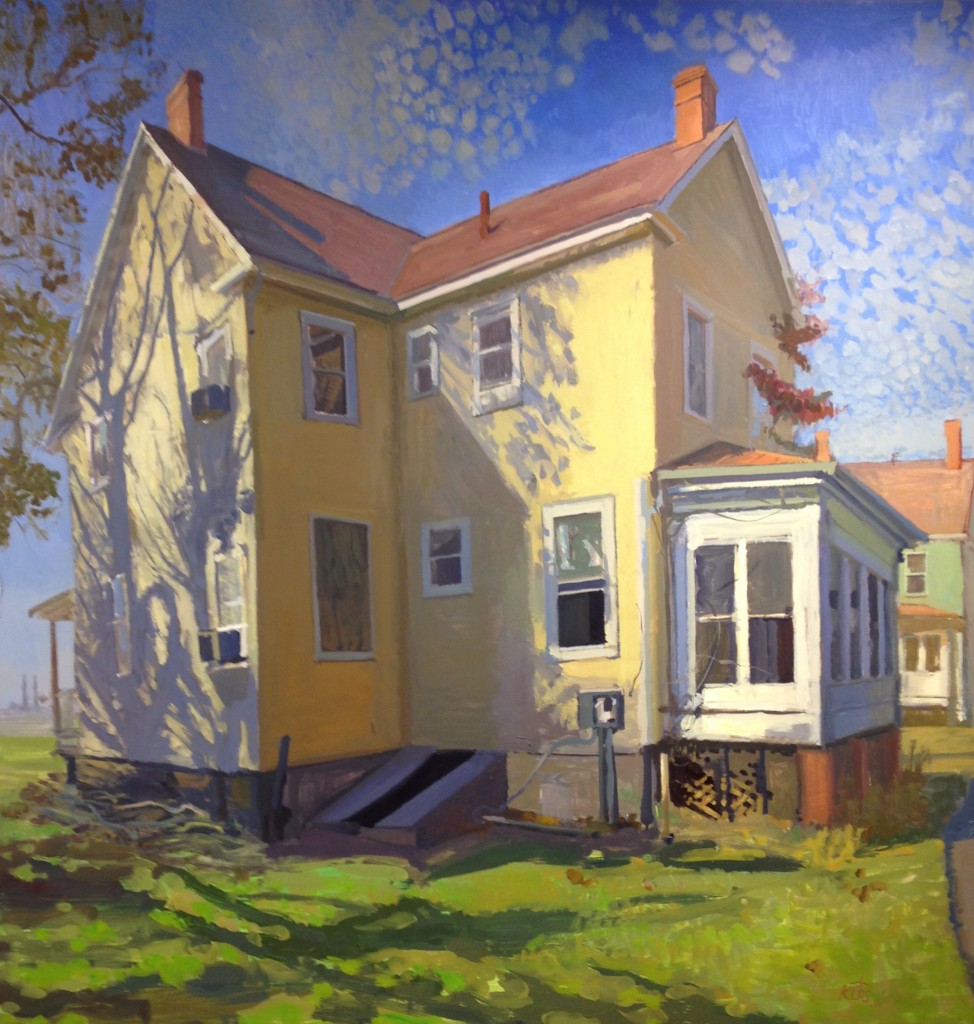 Saturday night I attended the opening at Oxford Gallery of a three-person show with new work from my old friend, Rick Harrington, along with two young artists whose work never fails to impress me: Matt Klos and Ryan Schroeder. Jim Hall put these paintings together in a brilliant way by seeing a commonality among all three: they are all depicting places or structures that have been abandoned, places once inhabited but now empty. The results range from a sense of desolation to a surprising aura of spiritual energy–as if the emptiness they’re facing has stripped away the trivia of daily life and what’s left in all of these images is a contemplative courage, a willingness to move through the absence of superficial beauty toward a mysterious, insecure spirituality. What’s impressive and humbling is how each of the three artists is doing this while learning how to see in an unpredictable way, not just in the sense of confronting a particular subject without preconceptions and trying to respond to each subject on its own terms–something Rick has been doing especially in a recent series of paintings not represented in this show–but also in terms of artistic method, where, with each painting, they are relearning, to a degree, how to get the image to come together. This is true, even though each artist has a recognizable individual style that’s uniform across all the work in the show, sometimes narrowing down choices dramatically, so that you would think the results could easily become formulaic, but this isn’t what happens. Each painting is a discovery for them, not just an exercise in doing what they’ve learned how to do over the years. I’ve spent many hours talking with Rick about how he wrestles with an image, and I’ve written about his process and his work many times here. He works from drawings he’s made at various sites, usually coming to an impasse and then getting beyond it. It’s an act of determination that pushes past frustration until the image comes together. Like Klos, in the series of abandoned houses he’s showing (inspired partly by his encounter with De Kooning at MoMA a couple years ago), Rick draws from abstract expressionism, especially Rothko, and for me the heart of abstract expressionism is a willingness to let the image grow and unfold, following where the image leads rather than controlling it–the painting comes to life in the process of painting and the artist nurtures the energy that emerges, without knowing how the image will come together and resolve itself even well into the process. It means not entirely being in control of outcomes, but rather taking chances and discovering as you go.
Saturday night I attended the opening at Oxford Gallery of a three-person show with new work from my old friend, Rick Harrington, along with two young artists whose work never fails to impress me: Matt Klos and Ryan Schroeder. Jim Hall put these paintings together in a brilliant way by seeing a commonality among all three: they are all depicting places or structures that have been abandoned, places once inhabited but now empty. The results range from a sense of desolation to a surprising aura of spiritual energy–as if the emptiness they’re facing has stripped away the trivia of daily life and what’s left in all of these images is a contemplative courage, a willingness to move through the absence of superficial beauty toward a mysterious, insecure spirituality. What’s impressive and humbling is how each of the three artists is doing this while learning how to see in an unpredictable way, not just in the sense of confronting a particular subject without preconceptions and trying to respond to each subject on its own terms–something Rick has been doing especially in a recent series of paintings not represented in this show–but also in terms of artistic method, where, with each painting, they are relearning, to a degree, how to get the image to come together. This is true, even though each artist has a recognizable individual style that’s uniform across all the work in the show, sometimes narrowing down choices dramatically, so that you would think the results could easily become formulaic, but this isn’t what happens. Each painting is a discovery for them, not just an exercise in doing what they’ve learned how to do over the years. I’ve spent many hours talking with Rick about how he wrestles with an image, and I’ve written about his process and his work many times here. He works from drawings he’s made at various sites, usually coming to an impasse and then getting beyond it. It’s an act of determination that pushes past frustration until the image comes together. Like Klos, in the series of abandoned houses he’s showing (inspired partly by his encounter with De Kooning at MoMA a couple years ago), Rick draws from abstract expressionism, especially Rothko, and for me the heart of abstract expressionism is a willingness to let the image grow and unfold, following where the image leads rather than controlling it–the painting comes to life in the process of painting and the artist nurtures the energy that emerges, without knowing how the image will come together and resolve itself even well into the process. It means not entirely being in control of outcomes, but rather taking chances and discovering as you go.
It strikes me that these three are attempting to do just that, and yet this is MORE
March 15th, 2014 by dave dorsey
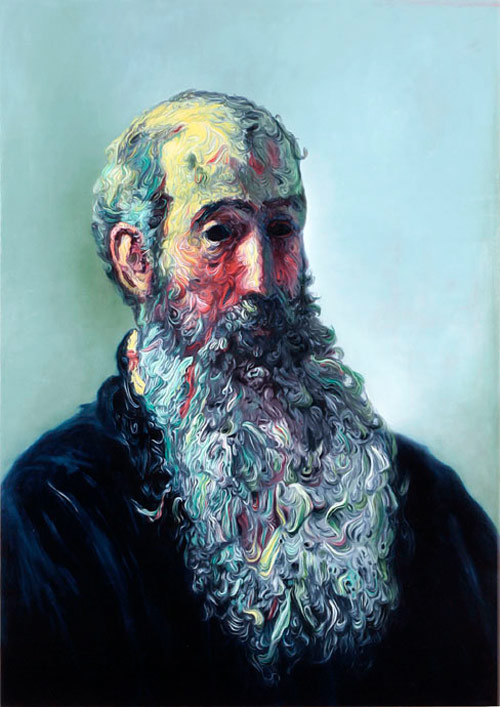
Glenn Brown’s, Declining Nude, a take on Pissarro’s self-portrait
Today I will continue working on a painting I started more than three weeks ago, hoping to finish some challenging work I’d like to show in June at Viridian Artist. I’m so busy right now, I rarely have time to write anything thoughtful here, but when I wake up early I try–which is nearly every morning in this endless winter, with record low temperatures here in Rochester, which apparently has drifted northward to the edge of the arctic.
Recently, my friend Walt Thomas sent me How a Science Fiction Book Cover Became A $5.7 Million Painting. It describes an auction sale of a painting in which Glenn Brown appropriated an illustration by Chris Foss, used as the cover for a book by Isaac Asimov, and then repainted the resulting image in his own heightened style. (You can see other examples of Glenn Brown’s compelling postmodern work with a quick Google search: they’re like a re-envisioning of what the Old Masters saw through the eyes of a charismatic zombie. When he’s dealing with historical work, his own paintings are fantastic. When he’s asking permission and then slightly modifying a contemporary painter’s output, it irks me, especially when the art world uses the results to move so much money from one deep pocket to another.) If you depend that much on the work of another living artist, then shouldn’t the proceeds be split fifty/fifty? Apparently postmodernism, with its irony and appropriation, is alive and well, one of the few great jobs in this zombie economy if you can get it. Needless to say, I would never complain when DJ Premier samples, say, Illmatic, (I guess he’d be sampling himself, in a way) which itself sampled plenty of previous recordings. He would get nothing but gratitude from me, but those are fair use, in my book, little quotes from much larger work. Yet when you enlarge and essentially colorize an entire earlier image that was sold as the livelihood of another artist, isn’t that crossing the line? I do not know the answer to this question, since I’m not an attorney, but I do know that it doesn’t feel right to me, the way so much postmodern work feels, intentionally or not, inauthentic, more or less a clever con. (I don’t feel that way about Brown’s reconstruction of Old Master images in his own vision, like the self-portrait by Pissarro above. Those paintings feel original in their own way, intensely painterly and passionate and spooky, and they belong to a long tradition of internalizing previous work by repainting it in the artist’s own style. Even Van Gogh did it. In Brown’s reworking of Rembrandt, say, there’s more of Brown in the paintings than the previous artist and Brown’s own vision is intriguing.)
What troubles me about the assumptions that make this kind of work possible is something much larger in our culture—and it might even be a deeper shift than the word “culture” indicates. This feels like a steady, slow erosion of the notion of human nature itself. I’m tempted to reread The Plague, because what’s happening now feels as if that book could serve as its metaphor. It’s seems to be happening everywhere. It’s the way in which everything now seems to conspire to dissolve a sense of individual identity and selfhood, while making you believe you’re asserting it like never before. I believe this is one of the primary goals of postmodernism itself, isn’t it? We have no soul, no enduring identity; we are simply a welter of impulses, perceptions, ideas, emotions, woven together by cultural and economic forces outside our control, mere nodes in a network of signifiers that give birth to the illusion that we actually exist as individuals with an independent mind and heart, free to choose what we do in our lives. (Don’t remind me how close that is to Buddhist metaphysics, since I’ve done bush-league Buddhist meditation for decades and am an enthusiastic advocate for wisdom and compassion, as little as I might practice either in my own life. I’m on a rant here, and I don’t need inconvenient reminders like that right now.) As dutiful postmodernists, we need to deconstruct what has come before, and what’s around us, in order to become free of it, though who, pray tell, is free when it’s all said and done, if our individual identity is itself an illusion? If we are just a mechanistic net of neurons firing in sequences determined by everything happening in the world around us, conjuring up an illusion of personal integrity, then why does it matter what we do? Hence the gloomy, lucrative ouvre of Glenn Brown: rather than be troubled by the anxieties of influence when gazing at the Old Masters, just appropriate it and do some interesting violence to it, adding your signature at the bottom. And I use the word interesting without irony here. I like what he does. So, given this assumption, that many of the beliefs we inherited from the Enlightenment, and the Greeks, which went into our ostensibly naïve assumptions about how an individual can make his or her way through the world, and enabled us to found this nation of individuals who once believed they were free to build an original life for themselves out of hard work and ingenuity, well that’s all so 20th century . . . If you originated it, I can adopt and sell it. Ideas can’t be copyrighted. Information wants to be free. And so on. We aren’t really free agents, with an enduring identity that has any substance apart from the soup of signifiers around us—the shows we watch, the ads we take in, the music we hear, the noises we make on social media, such as this blog—we’re just a collection of impulses generated by what other people have done and are doing around us and who we are depends on what others know about us.
Believe this, and then all of what’s happening now makes sense. Privacy has been one of the first imperatives to go. It’s founded on the notion that we have some right to ourselves—our thoughts, our feelings, our possessions and the fruits of our labor in general–that no one else can violate. Is it proper to feel this matters now? For more than a decade—think back to your first Compuserve or AOL email account if you were alive then, back in the 90s if you want to know when this really started—your private thoughts and feelings have become more and more open to public scrutiny. “If you don’t want it on the front page, don’t put it in an email” has been an adage for email. I have friends who say, “I’m not doing anything wrong, why should I care if someone else reads my email?” And they probably shouldn’t care, but something integral to being human has been lost in the willingness to voice that dismissive question. We are becoming unreal to ourselves in a way that my friend Richard Todd explored in The Thing Itself: it gets harder and harder to distinguish between what’s illusory and what isn’t. (Not that it was ever easy in the moral realm.) If someone else is free to carefully monitor the content of my life on the Internet, is that evil or just the whole point of being on the Internet now? Along with Diane Feinstein, I lean toward the former.
Last Thursday’s Community episode did a fast, poetic twenty minutes or so on the psychological dependency of social media. A beta test of a new app, Meow Meow Beans, turned the college into a hierarchy of a small elite leisure class wearing togas and the rest of the school, the reign of the most popular over all the rest as everyone struggled to get a five-star popularity rating; it was replaced by a revolutionary junta, just a mirror image of one tyranny rather than the other. Capitalist excess followed by totalitarian tyranny, the old familiar story. The latter made more sense as a critique of social media: the mob rule of popularity ratings leading to a revolution of the people, which leads to just another kind of elitism. What it suggested to me is that people had pretty much become their phones, where they tracked what other people thought of them. No one really had any kind of character apart from how they were seen. (Leave it to a sitcom to have familiarity with the need to be seen in order to be.) The implication was that anything private left after that kind of self-exposure either didn’t matter or was a threat to the system. The implication was that as an Internet participant you are essentially saying, you don’t care if your entire life is on view to anyone and everyone, whether it’s your group of friends or your larger brother at the NSA, since you “have nothing to hide.”
Privacy isn’t simply about hiding something wrong or bad. It’s about preserving the meaning of what you do in a way that others aren’t able to understand or manipulate or deconstruct to their own ends. In the composition of a great poem, there is a level of hidden meaning, accessible only to a poet, that gives the poem power—no amount of deconstruction will uncover what that is, because it’s private. It denotes all sorts of things, but ultimately what drives it, what keeps a poem fresh, I believe, is the mystery of what isn’t there, a mystery otherwise known as Robert Frost or Syliva Plath or T.S. Eliot. Someone else could sample that poem and put it to other uses, and dissect it to within an inch of its life, but what others can’t sample is the essence, the heart, of the work itself. What keeps it alive is the elusive identity of the poet, there between every word, but also not there in what’s actually said. It’s something you can observe up to a point, and even imitate how it expresses itself, but it’s ultimately beyond reach. What a person actually is can’t be digitized or politicized or channelled into some intellectual agenda. We seem to think nothing we do or think or experience should be beyond reach now: we live in order to exhibit who what when where and how we are. We’re willing participants in the exposure of of our lives. As well as, secondarily, to publish cat videos. (A gross overstatement, considering the almost entirely trivial content of social media.) Thursday’s episode of Community satirized this impulse. A new app put everyone at the mercy of his or her cell phone, everyone doing anything they could to get a five-star Meow Meow Beans rating. It was a lot to weight to pack into a half-hour sitcom, but Dan Harmon made it entertaining (I’m assuming he’s still in charge at the show). It will be interesting to see if “Meow Meow Beans” becomes a meme on social media.
Few people seem to care about privacy now. Is property, as well, starting to follow down the same path? I once bought albums on vinyl, and movies on videotape. I once owned Photoshop. Now I’m wondering if I shouldn’t just give up ownership outright and rent access to all my entertainment and art and software via some kind of streaming account, such as Spotify. I still own a car, but fewer and fewer people do. In this economy isn’t it smarter to rent? Will access to all information, and property, follow this same path? (Did the loss of net neutrality get much notice in the media?) I have always had to pay for my New York Times. Nothing wrong with that. But I used to actually own it, and have private access to it whenever I wanted, as long as I was willing to hoard towers of newspapers in a corner. I much prefer being able to search the archive of that newspaper’s history on the Web. But what I give up is control of my access to that information. If someone turns off the Internet spigot, then I am haplessly uninformed. And, granted I’m getting older, and memory is slowly being revealed as the unreliable narrator of my life, but why should I care if I can’t remember anything? I’ve outsourced my memory in large part to my iPhone and my laptop. Google is my memory now. At some point if an individual’s link to the Internet gets severed, could that be the equivalent to a computer reboot? Tabula rasa, reformat, reinstall. We start fresh, our brains merely blank slates we can refill with our operating system when our ISP grants us access again to our thoughts and dreams. Life continues to feel more and more, as it has been doing for years now, like a Philip Dick novel.
We’re being trained to think of experience as something granted by an external source: our ISP, our cable provider. Streaming vs. owning is an example of this paradigm shift, but you can see it in everything. The loss of privacy is enormous in the way it shapes the concept of a lone, private, Thoreauvian self—as something either inconsequential or illusory—and nobody seems to really care that much about it, because we’re all too distracted by the endless incoming torrent of media to actually notice how we’ve simply become another outgoing stream of data. Once you do away with that individual agenthood, then you’ve made the whole notion of America obsolete. If there are no self-sustaining individuals, then what’s the point of that antiquated Constitution?
Should I bring this around to painting now, or just keep getting things off my chest?
Painting strikes me as one of the most utterly Luddite things one can do at this point. I sit at my old-school easel, with a smelly assortment of minerals and fluids on a sheet of thick glass, with wooly, worn brushes I struggle to smooth into a pointed tip, and I spend hours applying color, inch by inch, slowly, to a length of cloth stapled to a wooden frame. The physical struggle of painting is a large part of what it’s about. As I’m sure I’ve pointed out before, a whole length of muscles on one side of my back are far more developed than the muscles on the other side, from decades of simply holding a nearly weightless brush up in the air. When I saw it in a mirror a few years ago I thought, what the hell?, and eventually realized, oh right, I’m a painter.
In physical terms painting is like the sort of labor that robots have stolen from us. Yet in all other respects, it’s exactly the opposite of it. It’s a unique embodiment of who I am, as a person, an individual, partly because it can’t be reduced to data. It’s one of the few creative acts left that can’t be copied exactly as it is. It’s one-off, and in that lies the pathos and beauty and real-ness of it. Yes, it can be photographed and passed around in extremely hi-res images that show me every last detail of the surface, but in all the years of making and looking at art, I’ve yet to see a photographic image that actually conveys what I see when I look at the actual work. It may have to do with the way oil paint reflects light, as skin does, from various depths: the outer surface, the deeper layers of flesh, and even the dark course of veins, all reflecting different colors that mix on the retina in a way that a flat reproduction can’t. It averages out those colors into a single one, flattening the image and giving you the next best thing. But there’s so much more to it than that single color per pixel. If lit a certain way for the shot, a photograph can even show you the texture of the surface. I know from reproductions that Braque mixed sand into his paint, but no photograph of his work can convey the sense that, when you see one of his gueridons at the Phillips, you are looking at something as solid and heavy and ancient as a sheet of sandstone, where the colors are merely striations in the rock itself. As is true of Burchfield, Braque conveys something utterly unique in his best paintings, something no other painter has even remotely achieved, and I’ll be damned if I can say what exactly that is, but I love that quality in their work the way I love sunlight. You can’t get it from a photograph of what Braque did: you can get a taste, but it isn’t the same. Bonnard, don’t get me started. There’s no way to grasp what Bonnard achieved through reproductions of his work. You have to see the actual paintings. Vuillard as well. I could add dozens of other names. But what if someone, with a 3D printer, could actually recreate a three-dimensional duplicate of one of Braque’s paintings? That way you would have everything: the color, the texture, the relief map of the painted surface itself. But wouldn’t it be colored plastic? A 3D printer that could generate objects out of the original materials? Are we into the realm of absurdity here? (On the other hand, if someone could do that, I’d hang it on my wall. I can’t afford the real thing.)
My point is that painting is one of the ways we have of being true to the mystery, the secrecy, of human nature. It’s a stubborn way of living off the grid, at least in the act of making it. With the ongoing death of art galleries (OK Harris, R.I.P.), the rise of the Internet as a marketplace for art, and all the other ways we can addle our minds media—here I am using that media, right?—our culture is attempting to deny the reality of what painting embodies, as may be eroding the privacy and mystery and integrity of individual human nature. One way of standing in opposition to that resides in a willingness to quit ranting and just get back to the labor of picking up a paint brush, which, finally, I intend to do right now. Or as someone ought to have said on Community, “Be a one, and be yourself.” Maybe someone did. If I missed it, it was probably because I was checking email.
March 14th, 2014 by dave dorsey
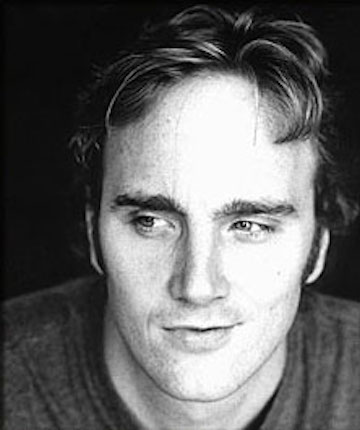
From the latest Mohr Stories. Comedians talking about performance art, like a little side note from My Dinner With Andre. If it had been lunch, maybe. Couldn’t I do this at home?
Jay Mohr: Didn’t you play Marina Abramovic?
Beth Lapidas: Yes. I started my career as a performance artist, and I left performance art because I wanted to be funny.
Jay Mohr: It’s a fine line between performance art and this person’s really wasting my time.
BL: Uh, well a lot of performance art is that.
JM: Cause I’ve been to a bunch. Marina Abramovic, whom you played a version of on Sex in the City, now owns a farm in upstate New York. I’m going.
BL: Yes she’s building this institute. She wants to get out of ego, but she’s still calling it the Marina Abramovic Institute.
JM: We all want “look at me.”
BL: Look at me. Don’t look at me. Look at me. Don’t look at me.
JM: And you need to look at me more when you aren’t looking at me. There was a huge article, I think it was in Vogue.
BL:There was an article in the New York Times a couple weeks ago.
JM: I read both. She’s got a farm in Hudson, New York. It’s like hundreds of acres. You spend a little money. Not crazy money. You go up there and make a six hour commitment and you get a bag of rice mixed with lentils and you have to separate the rice from the lentils and you have to count them. At some point you go from what the fuck am I doing here to complete transcendental bliss.
BL:A meditative state.
JM: It’s forty one, forty two, these are the lentils and these are the rice. And you go for a walk.
BL: And there’s a place for taking a nap.
JM: We’re in, by the way. We punched our ticket.
Afterthought from your faithful blogger: who says performance art, and art in general, shouldn’t be funny, or at least amusing? Why couldn’t Jay’s guest have stuck with it and simply made her art exactly what she wanted to say? Why did she have to “go into comedy?” If you want the hard truth about human nature, you can’t do much better than Louis C.K.. One of his sets shows me as much about human life as a good short story. C.K.’s work is closer to the reality of human experience than a lot of what passes for high art. He says things most people wouldn’t dare say. I could name a dozen other comedians who do the same. Starting with Kinneson. It’s partly why I listen to them when I paint. When I think of the Dalai Lama I don’t think much about anything he’s said. I remember his quiet laughter as he’s saying a large part of it. On that note, from last night’s Community, a little rap from a man in a PayDay peanut bar suit: Another Day Another Dollar:
Well, I’m a peanut bar, and I’m here to say
Your checks will arrive on another day!
Another day, another dime, another rhyme, another dollar,
Another stuffed shirt with another white collar,
Criminals, Wall Street, taking the pie,
And all the black man gets is a plate of white lies,
Prisons be recruitin’ ’em, and police be shootin’ ’em,
Them rap artists lootin’ ’em, them labels all deludin’ ’em,
And Barack Obama is scared of me,
‘Cause I don’t swallow knowledge and I spit it for free . . .
One of the funniest moments I’ve ever seen on that show. Starts around 1:20 here.
March 12th, 2014 by dave dorsey
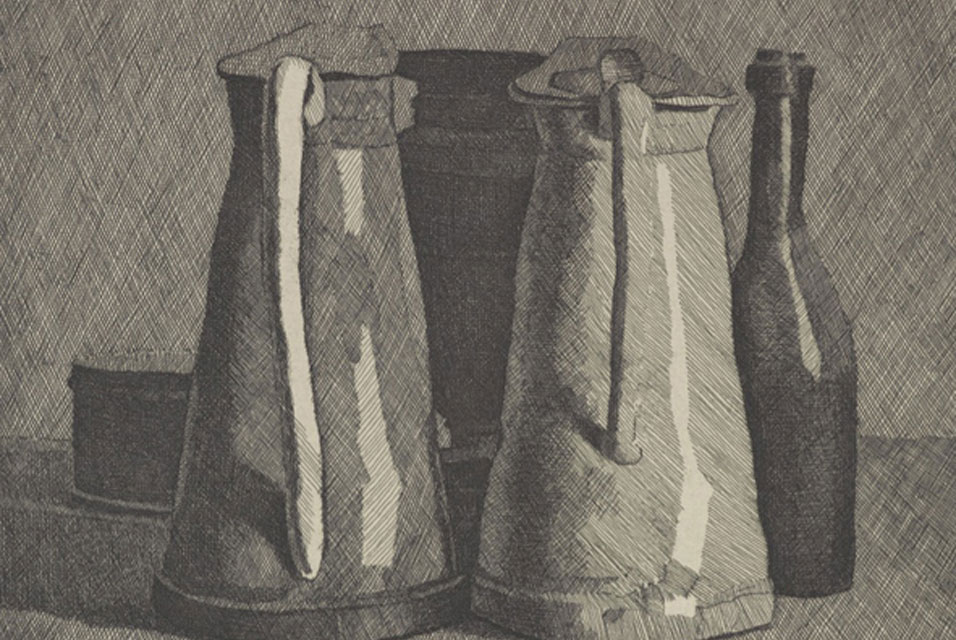
Giorgio Morandi, Still Life with Five Objects. 1956.
A quote from Marshall Gregory’s essay on literature that applies just as well to conceptual vs. perceptual art, or what Frank Lentricchia, in the same essay, is quoted as calling “Art as stubborn specificity, as untheorizable peculiarity.”:
“Since modernism’s elevation of the notion of aesthetic purity and writerly experimentation in literature, and since postmodernism’s elevation of the notion of linguistic indeterminateness, the educational power of literature, history, and other narrative forms has either been neglected or reduced to the inculcation of ideology. The fuel that powers all of these imaginative activities is concrete details. Abstractions, generalizations, precepts, and logic play indispensable roles in reasoning and theory-making, but the imagination needs images, textures, sensations, smells, sounds, tastes–the look and feel of particular things in particular contexts–in order to do its work.”
–Marshall Gregory The Sound of Story: Narrative, Memory, and Selfhood
March 9th, 2014 by dave dorsey
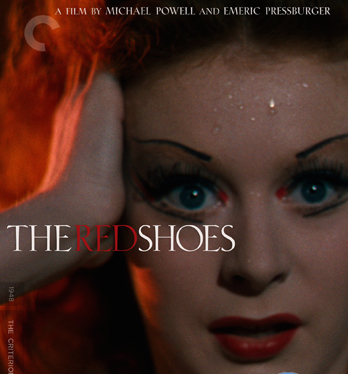
From the Criterion website, Scorsese on Powell and Pressburger’s The Red Shoes, with some comments that could apply to art in general:
I’ve said and written so much about this picture over the years; for me it’s always been one of the very greatest ever made, and every time I go back to look at it—about once a year—it’s new: it reveals another side, another level, and it goes deeper. What is it that’s so special about The Red Shoes? Of course, it’s beautiful, one of the most beautiful Technicolor films ever made; it has such an extraordinary sense of magic—look again at the scene where Moira Shearer is walking up the steps to Anton Walbrook’s villa, especially in the new restoration: it seems like she’s floating on currents of sparkling light and air. And there’s no other picture that dramatizes and visualizes the overwhelming obsession of art, the way it can take over your life. But on a deeper level, in the movement and energy of the filmmaking itself, is a deep and abiding love of art, a belief in art as a genuinely transcendent state.
—Martin Scorsese
March 7th, 2014 by dave dorsey
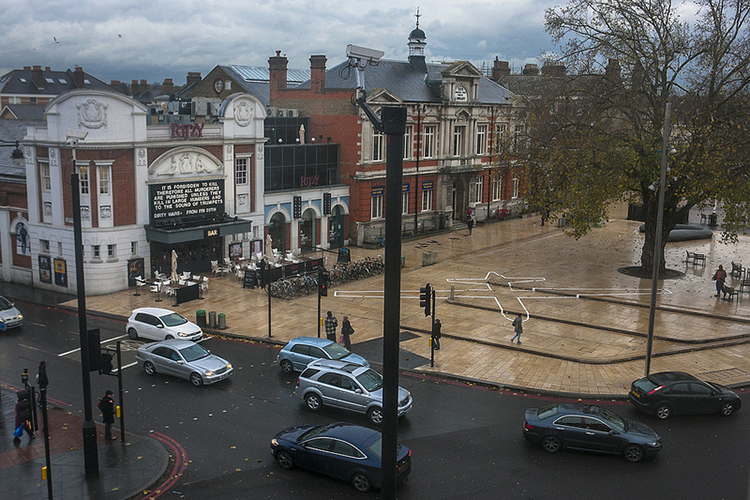
Powerful and simple street art from Fast Company. It would be creepier and more effective if we didn’t know who did it. Banksy must wish he’d thought of it.
March 5th, 2014 by dave dorsey
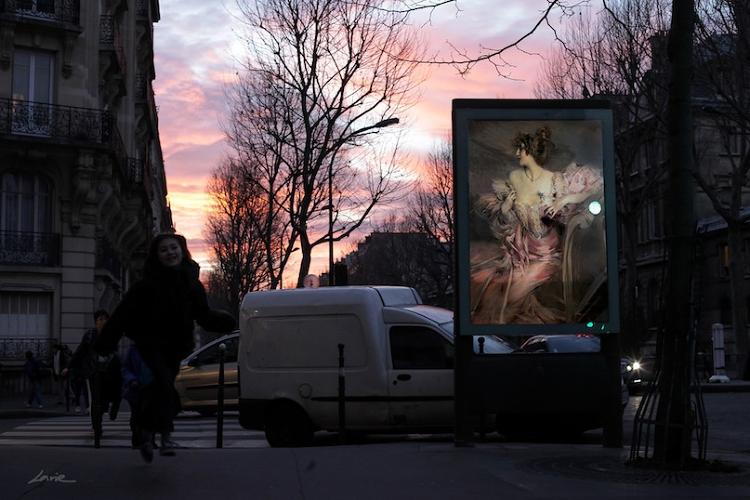
Art instead of ads. Like it.
This would be cool. Fragonard in the subway; Sisley riding on top of cabs. Not that it will ever happen. From Fast Company.
March 3rd, 2014 by dave dorsey

Amy Chiao’s fort and treehouse for visitors, tenants
Inside her loft, artist Terri Chiao has built a great place for fellow artists, or anyone else, to stay for $118 a night, and it’s in Brooklyn, no less. A fort and a treehouse. What could be better?
March 1st, 2014 by dave dorsey

Food to raise money for British museums at The Guardian.
February 27th, 2014 by dave dorsey
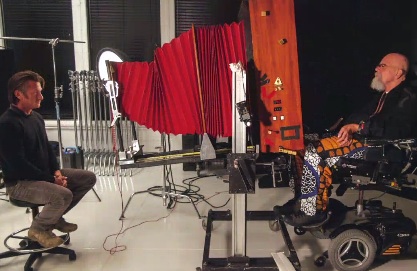
How Chuck Close deals with celebrity
At Vanity Fair, Chuck Close says he wants to humanize the stars. Finally. No longer must I click to Guess My Face Without Makeup or the mug shots at www.thesmokinggun.com for a full dose of celebrity humanity. It used to be I could rely on my daughter, Christin, to endear me to famous actors, back when she was a handler at New Line Cinema for many of these luminaries on their publicity tours. I’d hear about how Woody Harrelson kept reporters waiting just a bit in Florida because he wanted to swim up along the Gulf Coast to get from his hotel to where the reporters were meeting him. Seriously. He swam to his interviews. Energy efficient and good cardiovascular: so what reporter would complain about having to wait? If I’d been there with a voice recorder, I’d have felt ashamed for having driven to see him. She also told us how Chris Tucker carried his new MacBook around from one place to another on his tour, in the Apple box itself, with its plastic black handle, using it like a briefcase. When I heard that, I thought, why not? Who’s he need to impress? Tucker was humble enough to ask her for some quick tutorials to get him up to speed with his Mac interface after it arrived. I warmed up to most of them, when I heard how they acted when a camera was pointed at them. That seems to be what Close has in mind: to warm us up to all the ordinary-ness in their faces.
I’d love to borrow that Polaroid camera if only I wouldn’t have to build an addition over the garage for it. It would be funny if Close shook the huge photographs when they came out, just for old time’s sake.
February 25th, 2014 by dave dorsey
 There are many ways to be creative.
There are many ways to be creative.
February 23rd, 2014 by dave dorsey

Jeanette Winterson
“The so-called uselessness of art is a clue to its transforming power. Art is not part of the machine. Art asks us to think differently, see differently, hear differently, and ultimately to act differently, which is why art has moral force. Art asks that we remember who we are, and usually that asking has to come as provocation — which is why art breaks the rules and the taboos, and at the same time is a moral force. ” –Jeannette Winterson at Brain Pickings
February 21st, 2014 by dave dorsey
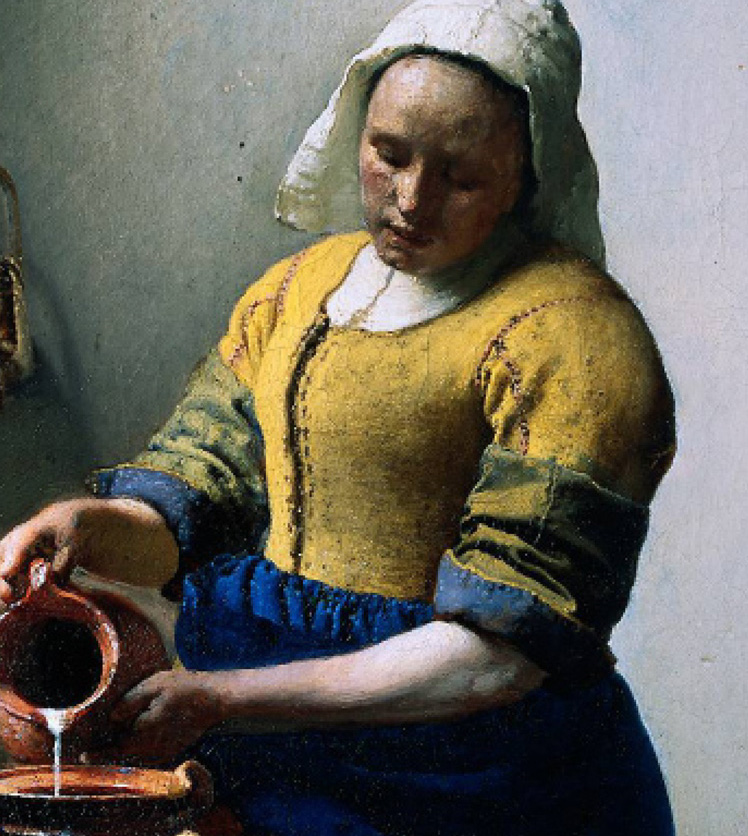
Vermeer’s Milkmaid, detail
Alain de Botton tweeted a link to this essay a few days ago, and it explores how reproductions are nearly as good as the original work. Clearly it was written by someone who doesn’t paint, but it’s the sort of thinking Warhol would have loved. I loved the assertion that we know what novels “are for.” What was Remembrance of Things Past “for”, exactly? It’s like asking what life is “for.” As I learned again recently at the National Academy Museum in Manhattan, seeing an actual Welliver (more like standing inside it) after seeing his paintings only in reproduction is like actually kissing someone after doing video calls with them for thirty years. You can learn nearly as much about who a person is from a distance, compared with being in the same room with him or her, if all you want is information and amusement. But contrary what the movie Her suggested, it just isn’t equal to what’s conveyed in a simple kiss. Original paintings are one of the few genuinely scarce things left in a world of generic information and freely exchanged music files: which themselves can be degraded copies of what used to be rich analog vinyl recordings.
Sorry, Internet. Deal with it.
February 19th, 2014 by dave dorsey
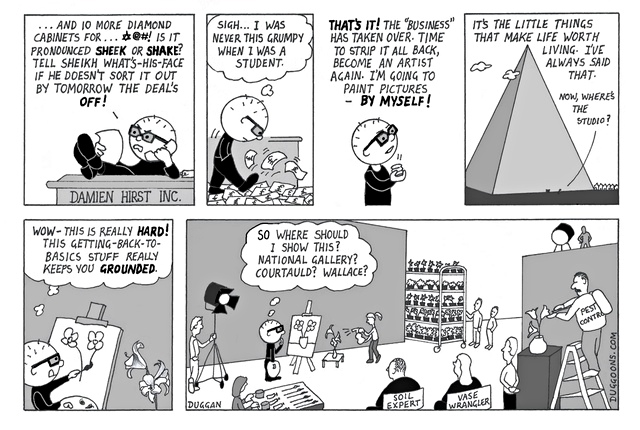
Damien Hirst at the drawing board
Damien Hirst keeping it real at The Guardian. Any openings for “vase wrangler?” I have experience.
February 17th, 2014 by dave dorsey
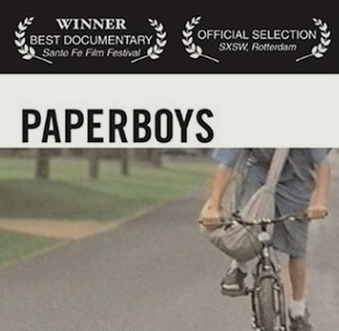
On my cousin Brian’s advice, I bought a used DVD of this documentary from Amazon for $10. I was a paperboy once, in Boise, and I remember the needle-nosed pliers I brought to the streetcorner where my manager dropped a bale of papers at 4 a.m. I used the pliers to snap the wires around the stack of Idaho Statesmans, folded them and stuffed them into my bag, the set off down Irving Street in the dark. I think I had maybe 60 subscribers on my route. The worst part was collecting for the month’s subscription, with my little perforated tablet of receipts, knocking on doors and having people hand me cash in exchange for a little ticket I ripped from the top sheet. No, wait, the worst part was when our manager tried to turn us into salesmen and drove us down into the valley knocking on doors in the less privileged neighborhoods, asking people to sign up for the newspaper. I really hated that. There was no Internet, of course; it was long before computers, back when I kept a collection of 45 rpm hit singles, with the big hole in the middle requiring the plastic adapter for the turntable spindle, songs like Red Rubber Ball and Black is Black and Sloop John B. But I digress . . .
The point is, this film is directed by a graphic designer who did “groundbreaking collaborative design for Beck, Beastie Boys and Sonic Youth.” It came out sixteen years ago or so, back in the heyday of the first (or was it second) bubble, better known then as the dot.com boom. Oh, those were the days, when the economy at least appeared to be strong. He says:
I wanted to see if these kids were aware that they are part of a long tradition. Were they aware of how they were also changing that tradition? While doing this film I was excited to see how the almost Norman Rockwell image of the paperboy blended in with the contemporary Eminem-influenced teenage boy. This hybrid of contemporary television/rap oriented teen and American icon of “the good old days” is so full of contradictions that happily live together.
Our Democrat and Chronicle, here in Pittsford, is delivered by an adult in a car, who comes around as early as my manager did in Idaho. He’s diligent and industrious. We pay by mail. I miss the kids on their bikes. It’s consolation that the Girl Scouts still knock gently on our door, offering to put our name on their list for cookies. Some traditions endure.
February 14th, 2014 by dave dorsey

Bill, on Artists in Berlin
Bill Murray to Charlie Rose on Berlin as an artists’ colony: “Berlin is a bubbling place. It’s an artists’ colony. Sort of like Austin, Texas. All the artists of Europe flock there because it’s relatively inexpensive. People live like socialists sort of; there are the squatters. I know an American guy, he was a socialist here, he went to Berlin and he rents his little place and squats somewhere else. I would think Berlin would be a wreck, but what they didn’t bomb is completely intact. On the East German side nothing is changed.”
It almost sounds as if parts of Berlin have been awaiting a renovation since WW II: where people can just squat and live for free. Hm, if it’s either Detroit or Berlin, is there really a choice?
February 11th, 2014 by dave dorsey
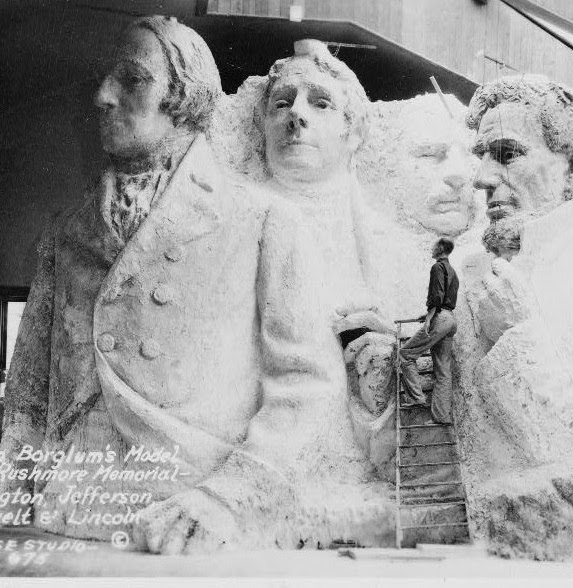
But they ran out of money.
February 9th, 2014 by dave dorsey
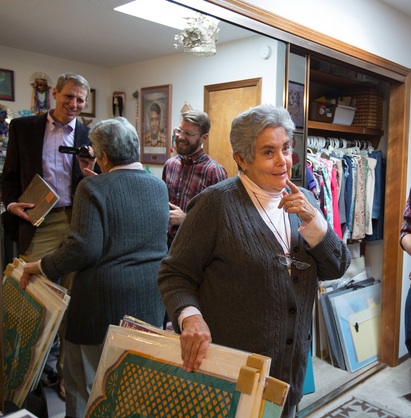
Catalina Delgado-Trunk, an undiscovered artist visited by Alice Walton’s scouts
If somebody knocks this year, answer the door. Alice Walton is sponsoring a search for unknown, unrepresented talent for a show meant to be her challenge to the Whitney Biennial and the art-world dominance of New York and Los Angeles. Her team ranks each prospective artist on three scales: engagement, virtuosity, and appeal. Refreshingly simple. Says the Times, “They are already logged 50,000 miles visiting 500 artists in 30 states, and they had almost 500 more to go.”
February 7th, 2014 by dave dorsey
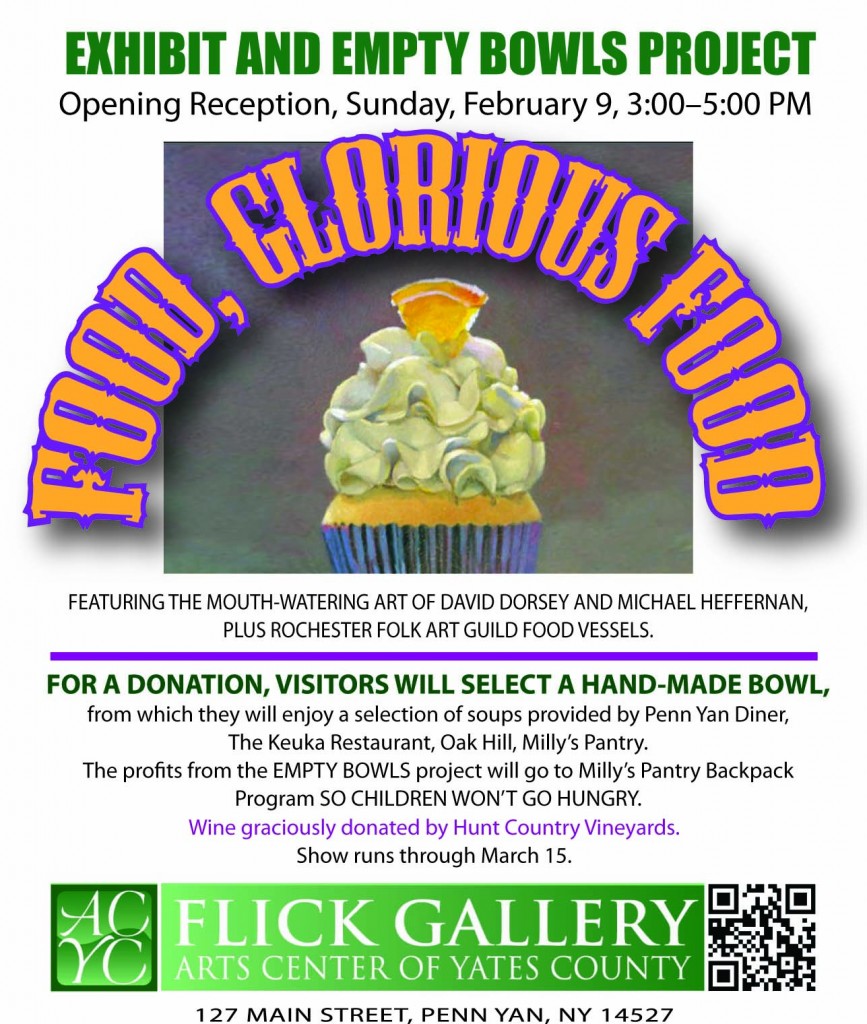
I’m donating 15 percent of any sales to the Empty Bowls project.
February 6th, 2014 by dave dorsey

Still Life with White Eggplant and Radicchio, Amy Weiskopf
“FOUNDED IN NEW YORK CITY in 1994, Zeuxis began as an association of painters exploring the possibilities of still life—traditionally the least prestigious of genres—in the post-Modernist art world.”
— Zeuxis
Fellow Oxford Gallery artist, Matt Klos, will be included in an exhibition at First Street Gallery of still life paintings around the theme of “blue.” He has a three-artist show coming up at Oxford next month as well.
From the email announcement: FIRST STREET GALLERY is pleased to present a group exhibition by Zeuxis, An Association of Still Life Painters.
“Painters compose with color the way composers paint with notes; one form builds in space, the other in time… And here is something else music and painting have in common: both can sing the blues.”
Any self-respecting still life, of course, is never still in the sense of being static. Its colors shift, push and build: a blue can be icy or mild, bracing or elusive. The challenge set by Zeuxis for the artists in Still, Blue is to investigate a particular blue, and from its character develop an entire painting.
Since 1995 Zeuxis, an association of still life painters, has organized dozens of group shows in New York City and around the country. Its exhibitions have been reviewed by The New York Times, The New York Sun, The Hudson Review, The Philadelphia Inquirer, and many other publications. The 31 participants in “Still, Blue” include, in addition to the artists of Zeuxis, guests Sallie Benton, Matt Klos, Carol Stewart, Benny Fountain, Catherine Maize, Stephanie Rauschenbusch, and Sheldon Tapley.
 Saturday night I attended the opening at Oxford Gallery of a three-person show with new work from my old friend, Rick Harrington, along with two young artists whose work never fails to impress me: Matt Klos and Ryan Schroeder. Jim Hall put these paintings together in a brilliant way by seeing a commonality among all three: they are all depicting places or structures that have been abandoned, places once inhabited but now empty. The results range from a sense of desolation to a surprising aura of spiritual energy–as if the emptiness they’re facing has stripped away the trivia of daily life and what’s left in all of these images is a contemplative courage, a willingness to move through the absence of superficial beauty toward a mysterious, insecure spirituality. What’s impressive and humbling is how each of the three artists is doing this while learning how to see in an unpredictable way, not just in the sense of confronting a particular subject without preconceptions and trying to respond to each subject on its own terms–something Rick has been doing especially in a recent series of paintings not represented in this show–but also in terms of artistic method, where, with each painting, they are relearning, to a degree, how to get the image to come together. This is true, even though each artist has a recognizable individual style that’s uniform across all the work in the show, sometimes narrowing down choices dramatically, so that you would think the results could easily become formulaic, but this isn’t what happens. Each painting is a discovery for them, not just an exercise in doing what they’ve learned how to do over the years. I’ve spent many hours talking with Rick about how he wrestles with an image, and I’ve written about his process and his work many times here. He works from drawings he’s made at various sites, usually coming to an impasse and then getting beyond it. It’s an act of determination that pushes past frustration until the image comes together. Like Klos, in the series of abandoned houses he’s showing (inspired partly by his encounter with De Kooning at MoMA a couple years ago), Rick draws from abstract expressionism, especially Rothko, and for me the heart of abstract expressionism is a willingness to let the image grow and unfold, following where the image leads rather than controlling it–the painting comes to life in the process of painting and the artist nurtures the energy that emerges, without knowing how the image will come together and resolve itself even well into the process. It means not entirely being in control of outcomes, but rather taking chances and discovering as you go.
Saturday night I attended the opening at Oxford Gallery of a three-person show with new work from my old friend, Rick Harrington, along with two young artists whose work never fails to impress me: Matt Klos and Ryan Schroeder. Jim Hall put these paintings together in a brilliant way by seeing a commonality among all three: they are all depicting places or structures that have been abandoned, places once inhabited but now empty. The results range from a sense of desolation to a surprising aura of spiritual energy–as if the emptiness they’re facing has stripped away the trivia of daily life and what’s left in all of these images is a contemplative courage, a willingness to move through the absence of superficial beauty toward a mysterious, insecure spirituality. What’s impressive and humbling is how each of the three artists is doing this while learning how to see in an unpredictable way, not just in the sense of confronting a particular subject without preconceptions and trying to respond to each subject on its own terms–something Rick has been doing especially in a recent series of paintings not represented in this show–but also in terms of artistic method, where, with each painting, they are relearning, to a degree, how to get the image to come together. This is true, even though each artist has a recognizable individual style that’s uniform across all the work in the show, sometimes narrowing down choices dramatically, so that you would think the results could easily become formulaic, but this isn’t what happens. Each painting is a discovery for them, not just an exercise in doing what they’ve learned how to do over the years. I’ve spent many hours talking with Rick about how he wrestles with an image, and I’ve written about his process and his work many times here. He works from drawings he’s made at various sites, usually coming to an impasse and then getting beyond it. It’s an act of determination that pushes past frustration until the image comes together. Like Klos, in the series of abandoned houses he’s showing (inspired partly by his encounter with De Kooning at MoMA a couple years ago), Rick draws from abstract expressionism, especially Rothko, and for me the heart of abstract expressionism is a willingness to let the image grow and unfold, following where the image leads rather than controlling it–the painting comes to life in the process of painting and the artist nurtures the energy that emerges, without knowing how the image will come together and resolve itself even well into the process. It means not entirely being in control of outcomes, but rather taking chances and discovering as you go.

















